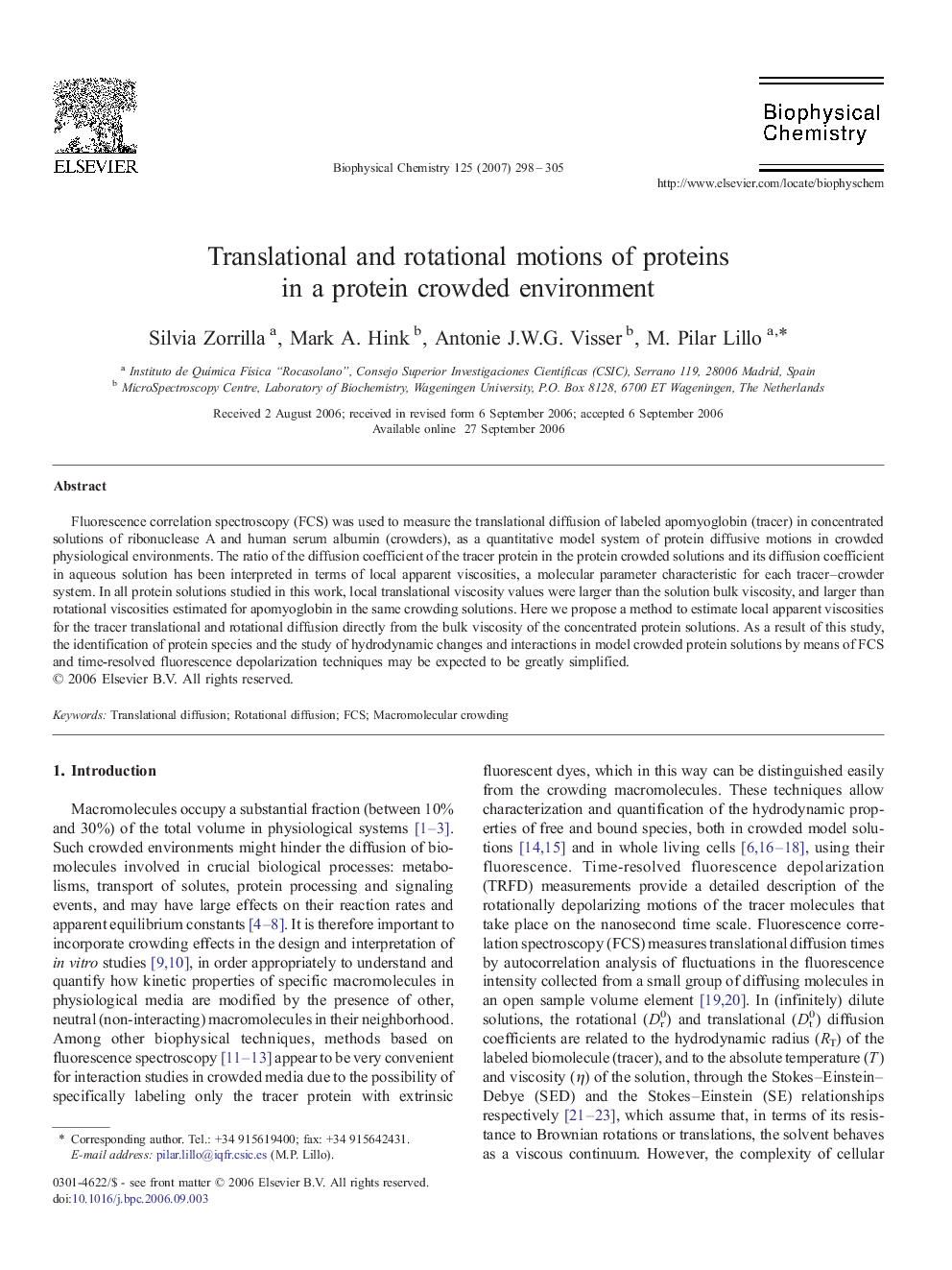| Article ID | Journal | Published Year | Pages | File Type |
|---|---|---|---|---|
| 5372281 | Biophysical Chemistry | 2007 | 8 Pages |
Fluorescence correlation spectroscopy (FCS) was used to measure the translational diffusion of labeled apomyoglobin (tracer) in concentrated solutions of ribonuclease A and human serum albumin (crowders), as a quantitative model system of protein diffusive motions in crowded physiological environments. The ratio of the diffusion coefficient of the tracer protein in the protein crowded solutions and its diffusion coefficient in aqueous solution has been interpreted in terms of local apparent viscosities, a molecular parameter characteristic for each tracer-crowder system. In all protein solutions studied in this work, local translational viscosity values were larger than the solution bulk viscosity, and larger than rotational viscosities estimated for apomyoglobin in the same crowding solutions. Here we propose a method to estimate local apparent viscosities for the tracer translational and rotational diffusion directly from the bulk viscosity of the concentrated protein solutions. As a result of this study, the identification of protein species and the study of hydrodynamic changes and interactions in model crowded protein solutions by means of FCS and time-resolved fluorescence depolarization techniques may be expected to be greatly simplified.
